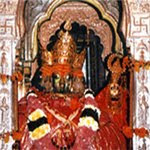Kerala, one of the most idyllic states of India, lies to the extreme southwest of Indian peninsula. It is flanked by the Arabian Sea on the west and the mountain ranges of the Western Ghats on the east. The state has been crisscrossed by a number of water bodies. This has given birth to internal water navigation systems, which also work as the major trade ways in the state. Kerala state is referred to as God's Own Country; state is a major tourist destination in India and is well connected with other parts of the country. Also being a popular destination in India and the world tourism map, Kerala is well accessible by air, rail and road.
By Air: Kerala is well connected through international and domestic airports. Kerala airports are easily accessible from all from major cities and it is easy mean of commuting. There are three airports in the state - Thiruvananthapuram, Kochi(Cochin) and Kozhikode(Calicut).
Trivandrum International airport
Trivandrum airport lies at the south end of Kerala. International flights to: Colombo, Singapore, Maldives, Dubai, Abudabi, Muscot, Doha, Kuwait, Baharin, Riad & Doha. Domestic flights to: Cochin, Banglore, Chennai (Madras), Mumbai (Bombay) & New Delhi.
Cochin/Kochi International Airport
The Cochin airport at Ernakulam is yet another airport that caters to both domestic as well as international flights, which lies between Cochin and Trichur. International flights operate from countries like Vienna, Dubai, Abu Dhabi, Muscat, Kuwait, Sharjah and Dhahran. Domestic flights operate from cities of Agatti, Bangalore, Chennai, Coimbatore, New Delhi, Goa, Hyderabad, Mumbai, Trichy, Trivandrum and Calicut.
Kozhikode(Calicut) Airport
The Calicut airport is located in the Malapurram district in Calicut. The airport is located at a distance of 26 Kilometers (approximately) from the Calicut railway station. International flights operate from countries like Sharjah, Bahrain, Dubai, Doha, Ras-al-Khaimah, Kuwait, Riyadh, Fujairah. Domestic flights operate from cities of , Chennai, Coimbatore
By Rail Transport : Rails are another good way of moving inside and from the outside Kerala. There are around 200 railway stations in Kerala connecting most of the places in the state to places in the other parts of the country and inside the state. Long-distance express trains connect important places in Kerala to places outside the state like Mumbai, New Delhi, Jaipur, Chennai, and Kolkata.
By Road Transport : Roads in Kerala are in much better shape than other states in India. An extensive network of metalled roads connects most of the places in the state. National highways 47, 17, and 49 connect Kerala with other parts of India. Major modes of road transport are buses, tourist taxis, cars, and local taxis and autos. Tamil Nadu, Karnataka, and Andhra Pradesh are some of the neighboring states that are easily connected to Kerala through roads.
Water Transport: From Cochin (Kochi), there are regular ships venturing towards the Lakshadweep Islands. Inside, backwaters of Kerala act not only as a popular transportation medium but are tourist attractions in themselves. These internal water navigation systems are today the single most popular travel product of Kerala.
By Air: Kerala is well connected through international and domestic airports. Kerala airports are easily accessible from all from major cities and it is easy mean of commuting. There are three airports in the state - Thiruvananthapuram, Kochi(Cochin) and Kozhikode(Calicut).
Trivandrum International airport
Trivandrum airport lies at the south end of Kerala. International flights to: Colombo, Singapore, Maldives, Dubai, Abudabi, Muscot, Doha, Kuwait, Baharin, Riad & Doha. Domestic flights to: Cochin, Banglore, Chennai (Madras), Mumbai (Bombay) & New Delhi.
Cochin/Kochi International Airport
The Cochin airport at Ernakulam is yet another airport that caters to both domestic as well as international flights, which lies between Cochin and Trichur. International flights operate from countries like Vienna, Dubai, Abu Dhabi, Muscat, Kuwait, Sharjah and Dhahran. Domestic flights operate from cities of Agatti, Bangalore, Chennai, Coimbatore, New Delhi, Goa, Hyderabad, Mumbai, Trichy, Trivandrum and Calicut.
Kozhikode(Calicut) Airport
The Calicut airport is located in the Malapurram district in Calicut. The airport is located at a distance of 26 Kilometers (approximately) from the Calicut railway station. International flights operate from countries like Sharjah, Bahrain, Dubai, Doha, Ras-al-Khaimah, Kuwait, Riyadh, Fujairah. Domestic flights operate from cities of , Chennai, Coimbatore
By Rail Transport : Rails are another good way of moving inside and from the outside Kerala. There are around 200 railway stations in Kerala connecting most of the places in the state to places in the other parts of the country and inside the state. Long-distance express trains connect important places in Kerala to places outside the state like Mumbai, New Delhi, Jaipur, Chennai, and Kolkata.
By Road Transport : Roads in Kerala are in much better shape than other states in India. An extensive network of metalled roads connects most of the places in the state. National highways 47, 17, and 49 connect Kerala with other parts of India. Major modes of road transport are buses, tourist taxis, cars, and local taxis and autos. Tamil Nadu, Karnataka, and Andhra Pradesh are some of the neighboring states that are easily connected to Kerala through roads.
Water Transport: From Cochin (Kochi), there are regular ships venturing towards the Lakshadweep Islands. Inside, backwaters of Kerala act not only as a popular transportation medium but are tourist attractions in themselves. These internal water navigation systems are today the single most popular travel product of Kerala.
